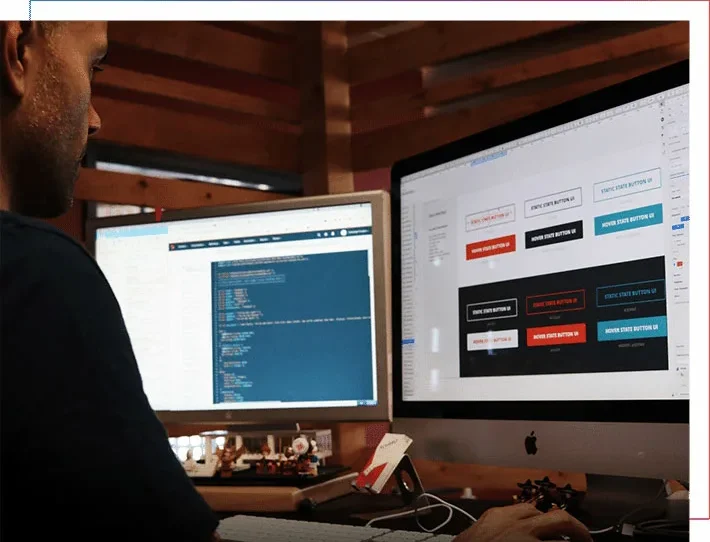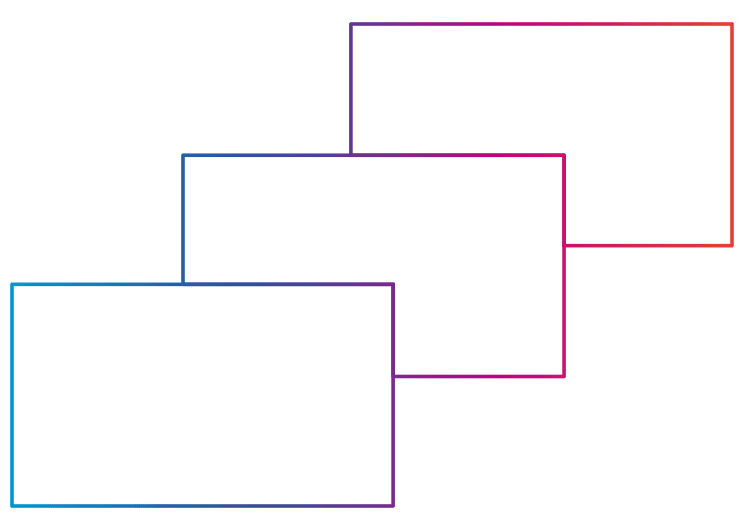Technology
Interview: Design systems from a graphics standpoint
After describing design systems in my previous article (Design systems – CX gamechangers?) and exploring for which companies they can transform CX development, this article takes a look at design systems with a focus on graphics. My colleague Eileen helped me out by providing her input.

In case you need a reminder, design systems form the link between design and development.
They may be similar to pattern libraries and style guides, but differ in key aspects. UI
elements (components) that can be assembled like building blocks are at the heart of design
systems. Most importantly, code and design teams always need to join forces. Instead of
working on individual modules one after the other, code and design are continuously
improved in tandem in an agile system.
Patrick Auer: How does a design system impact collaborations with development teams?
Eileen Wiehe: Graphic designers are often accused – sometimes jokingly, sometimes not – of designing interfaces and modules that developers are simply unable to code, or can only code with an exorbitant amount of work. As is often the case, there is an element of truth to this accusation. While graphic designers are free to explore the full range of their creativity and aim for optimum usability, developers need to pay closer attention to the amount of work involved. Lots of things may be achievable but the end don’t necessarily justify the means. If programmers and designers voice different requirements, this may be due to a lack of communication of each other’s needs as the teams work in isolation, separate from each other. A design system helps build bridges and enables us to speak a common language.
Patrick Auer: How do you feel about design systems from a purely creative point of view?
Eileen Wiehe: Some project managers out there solely focus on making sure projects are carried out on time and within budget. However, truly effective teams that work together like a well-oiled machine only tend to emerge when all members adopt a holistic view towards the key aspects of a project. Design systems help me understand the mindset and requirements voiced by developers. The mere establishment of a collaboration between coding and design helps us take a closer look at the next step in the process.
Patrick Auer: Do design systems limit creativity in the process?
Eileen Wiehe: No. In fact, the opposite is true. Design systems are devised to ensure consistency across all interfaces and digital touchpoints. In turn, this reduces reluctance to develop individual modules. Until now, developers would often worry that five interfaces would require five different designs and codes. However, the systemic consistency of a design system promotes the enhancement of individual modules, and consequently creativity. It also ensures an improved user experience across the board for each development stage. With design systems, when you work hard on one module, all touchpoints benefit as a result. It’s sort of like Lego: A modular system that always consists of the same blocks but can still be transformed into the craziest, ingenious and monumental constructions.

As a full stack developer, Patrick primarily works on comprehensive web solutions based on Pimcore and develops cutting-edge CX solutions for our customers. What sets Patrick apart? A natural at developing human-computer interfaces, Patrick uses his expertise to unite creation, UX and development.

Eileen is an art director at port-neo in Stuttgart. Specialising in UX design, her work involves creating eye-catching user experiences and interfaces for websites and apps. With a keen eye for trends and innovations, she keeps our customers in line with the times.
